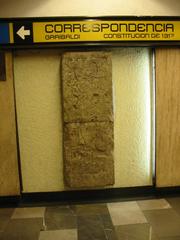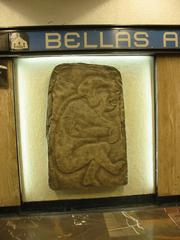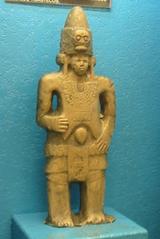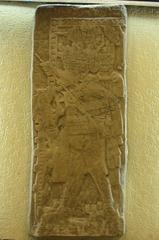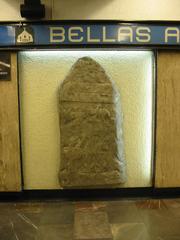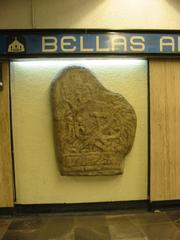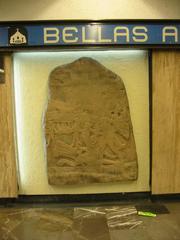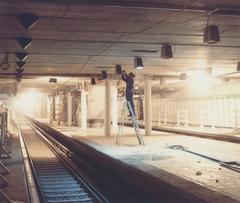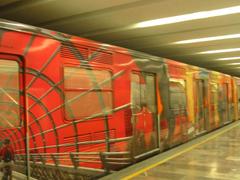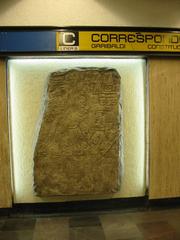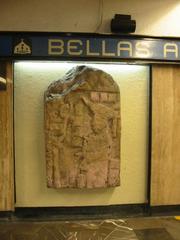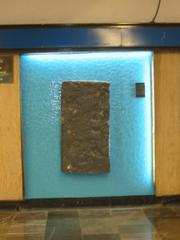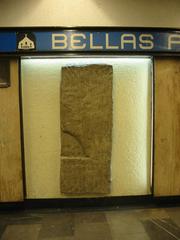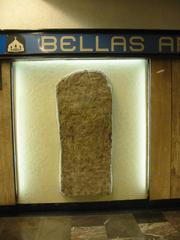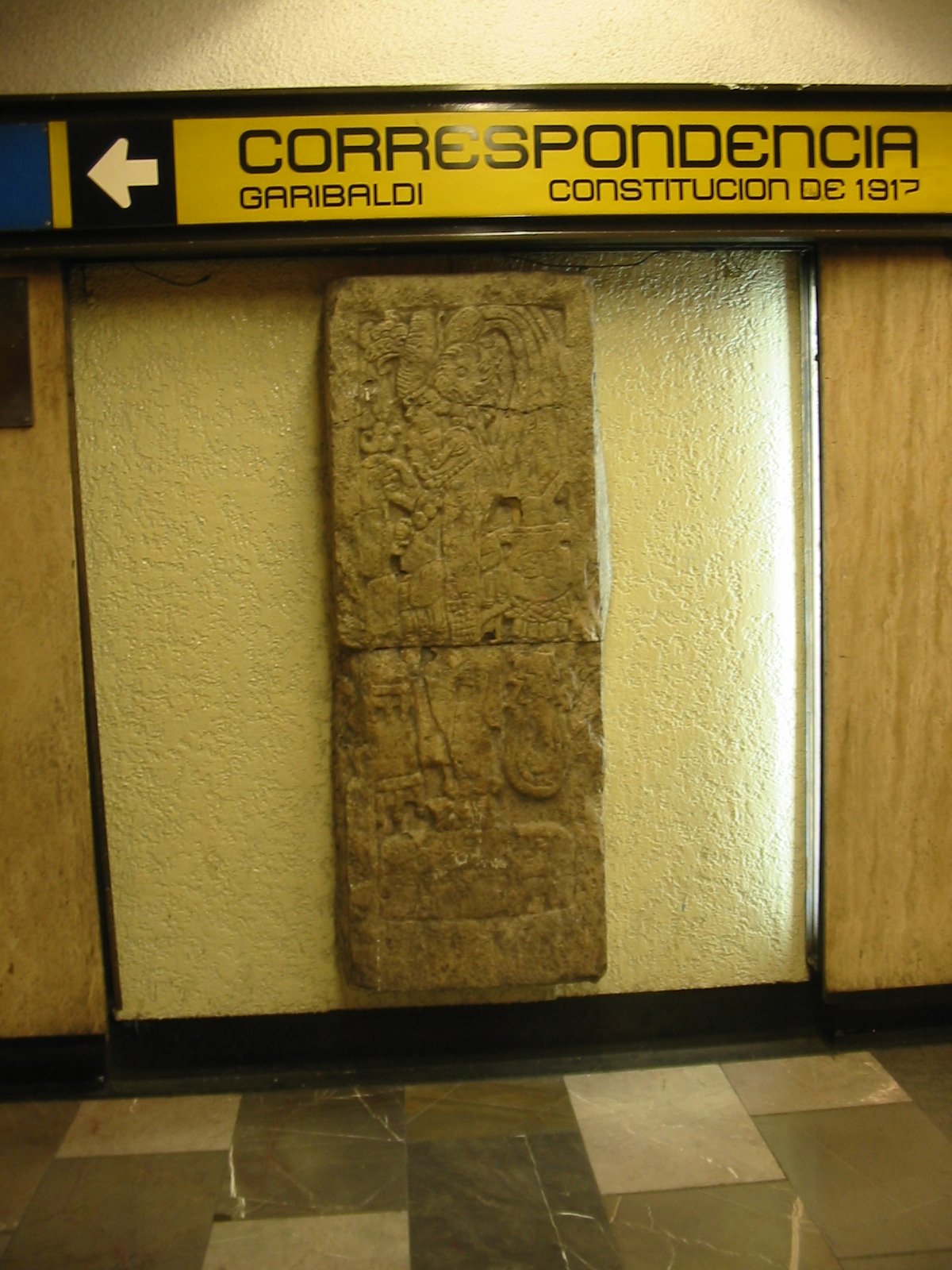
Palacio de Bellas Artes Mexico City: Visiting Hours, Tickets, and Historical Sites Guide
Date: 14/06/2025
Introduction
The Palacio de Bellas Artes is one of Mexico City’s most iconic and culturally significant landmarks, representing the nation’s artistic ambition, historical evolution, and dynamic identity. Constructed between 1904 and 1934, this architectural marvel seamlessly fuses Art Nouveau, Neoclassical, and Art Deco styles, reflecting Mexico’s journey between tradition and modernity. Originally conceived during the Porfiriato era to commemorate Mexican independence, the palace overcame geological and political challenges to become a beacon of national pride and artistic excellence (INBA, UNESCO).
Today, visitors can admire its gleaming Carrara marble façade, the colorful tiled dome, and interiors adorned with indigenous motifs and the renowned Tiffany & Co. crystal curtain. The palace is home to legendary murals by Diego Rivera, David Alfaro Siqueiros, and Rufino Tamayo, each narrating Mexico’s revolutionary history and social ideals (Google Arts & Culture). As the seat of the National Symphony Orchestra, Ballet Folklórico de México, and other prestigious institutions, Bellas Artes remains a vibrant hub for performances and exhibitions that celebrate Mexican heritage and foster international artistic exchange.
This comprehensive guide provides detailed insights into Palacio de Bellas Artes’ history, architecture, cultural importance, and practical tips—ensuring travelers can fully enjoy this historic gem in Mexico City’s heart (Lonely Planet, MuseosCDMX).
Contents
- Introduction
- History and Architectural Description
- Artistic and Cultural Features
- Visiting Information (Hours, Tickets, Tours)
- Accessibility and Travel Tips
- Nearby Attractions and Accommodation
- Visitor Etiquette and Photography
- Frequently Asked Questions (FAQs)
- Conclusion and Planning Resources
History and Architectural Description
Origins and Construction
The palace’s inception traces back to the Porfiriato, when President Porfirio Díaz commissioned a grand cultural venue to rival Europe’s finest theaters, marking the 1910 centennial of Mexican independence. Italian architect Adamo Boari’s initial design blended Art Nouveau and Neoclassical elements, reflecting European influences (INBA, UNESCO).
Construction began in 1904 but faced significant setbacks. Mexico City’s soft, marshy soil required innovative engineering solutions, and the Mexican Revolution (1910–1920) delayed progress due to political instability and financial constraints (Mexico News Daily). Mexican architect Federico Mariscal resumed the project in the 1920s, incorporating Art Deco interiors. The fusion of styles—Art Nouveau, Neoclassical, and Art Deco—makes Bellas Artes an architectural standout (Lonely Planet).
Inauguration and Early Years
After nearly three decades, Palacio de Bellas Artes was inaugurated on September 29, 1934, with a gala featuring the National Symphony Orchestra and Manuel M. Ponce’s opera “La Verdad Sospechosa” (Secretaría de Cultura). From its opening, the palace became the epicenter of Mexican artistic life, hosting operas, ballets, concerts, and exhibitions. It quickly established itself as the home of the National Opera Company, Symphony Orchestra, and Dance Company (INBA).
Artistic and Cultural Features
Architectural Highlights
Exterior
The palace’s exterior is clad in white Carrara marble, adorned with Neoclassical columns and Art Nouveau ornamentation. Its iconic dome, covered in yellow and orange glazed tiles, is visible from across the city (Atlas Obscura). The façade features grand bronze doors, intricate reliefs, and sculptures representing muses and allegories of the arts (mexicohistorico.com).
Interior
Inside, the Art Deco influence is apparent in the geometric motifs, bronze fixtures, and stained glass. The main auditorium seats approximately 1,700 guests and is framed by a unique stage curtain made of nearly one million pieces of colored glass—crafted by Tiffany & Co.—depicting the Valley of Mexico (Tiffany & Co.). Indigenous motifs and stylized representations of native flora and fauna are woven throughout the design (mexicohistorico.com).
Murals and Art Collections
The palace houses monumental murals by Diego Rivera (“Man, Controller of the Universe”), David Alfaro Siqueiros (“New Democracy”), and Rufino Tamayo, among others. Created in the 1930s and 1940s, these works reflect social justice themes, indigenous heritage, and Mexico’s revolutionary spirit (Google Arts & Culture, MuseosCDMX).
Role in National Culture
Bellas Artes is the central venue for the National Symphony Orchestra, Ballet Folklórico de México, and numerous cultural festivals. It has hosted performances by global luminaries such as Maria Callas and Plácido Domingo (El Universal), as well as state ceremonies and tributes for Mexico’s most revered artists (BBC Mundo).
Visiting Information
Hours and Admission
- Visiting Hours: Tuesday–Sunday, 11:00 AM–5:00 PM; closed Mondays and major holidays.
- General Admission: Around 70–75 MXN, with discounts for students, seniors, and children. Performance tickets vary by event (Museo Palacio de Bellas Artes).
- Ticket Purchase: Buy tickets on-site or online via the official website or authorized vendors.
Tours and Accessibility
- Guided Tours: Available in Spanish and English; reservations recommended.
- Accessibility: The building is wheelchair accessible with ramps and elevators. Contact the venue in advance for specific needs.
Getting There
Located in the Historic Centre, the palace is accessible by Metro (Bellas Artes station, Lines 2 and 8), bus, taxi, or on foot from nearby attractions (e-a-a.com).
Travel Tips and Nearby Attractions
What to Wear and Bring
- Comfortable shoes for walking.
- Dress respectfully; formal attire is recommended for evening performances.
- Bring a water bottle and, during rainy season, a light jacket.
- Photography is allowed in most areas, but flash and tripods are generally prohibited.
Surroundings
- Alameda Central Park: Adjacent to the palace, perfect for a stroll.
- Torre Latinoamericana: Offers panoramic city views.
- Museo Mural Diego Rivera: Showcases additional murals and cultural exhibits.
- Dining: The café in the Sears department store across the street is famous for its palace views (chrisandsara.com).
Accommodation
Options range from luxury to budget. Notable nearby hotels include Hilton Mexico City Reforma and the Gran Hotel Ciudad de México (e-a-a.com).
Visitor Etiquette and Photography
- Greet staff with a polite “buenos días” or “buenas tardes.”
- Maintain respectful behavior; avoid touching artworks.
- Flash photography and tripods are prohibited in most areas.
- Tipping in restaurants and for services is customary (15–20%).
Frequently Asked Questions (FAQs)
What are the visiting hours?
Tuesday–Sunday, 11:00 AM–5:00 PM; closed on Mondays.
How can I buy tickets?
Tickets are available onsite and online. Advance booking is recommended for performances.
Are guided tours available?
Yes, in both Spanish and English.
Is the palace wheelchair accessible?
Yes, with ramps and elevators.
What are the best times to visit?
Weekday mornings are less crowded.
Can I take photos inside?
Yes, without flash; tripods are not allowed.
Are there free entry days?
Occasionally; check the official website for updates.
Preservation and UNESCO Recognition
Designated a UNESCO World Heritage Site in 1987, Palacio de Bellas Artes is a testament to Mexico’s architectural and artistic legacy. Ongoing preservation efforts address challenges posed by the city’s shifting soil and the need to protect its artistic treasures (UNESCO). The palace attracts over a million visitors annually, making it a centerpiece of Mexico’s cultural life (Statista).
Conclusion and Planning Resources
Palacio de Bellas Artes offers a captivating journey through Mexico’s architectural splendor, artistic innovation, and living traditions. With practical tips on visiting hours, tickets, tours, and accessibility, every traveler can immerse themselves in the palace’s vibrant history and cultural offerings. For the latest updates, schedules, and tickets, visit the official Museo Palacio de Bellas Artes website.
Enhance your experience by downloading the Audiala app for guided tours and real-time updates. Follow our social media channels for inspiration on Mexico City’s cultural highlights and plan your visit to this iconic landmark today.
References
- INBA
- UNESCO
- Lonely Planet
- Google Arts & Culture
- Museo Palacio de Bellas Artes
- MexicoHistorico.com
- MuseosCDMX
- Mexico News Daily
- Atlas Obscura
- Tiffany & Co.
- e-a-a.com
- chrisandsara.com
- Statista
